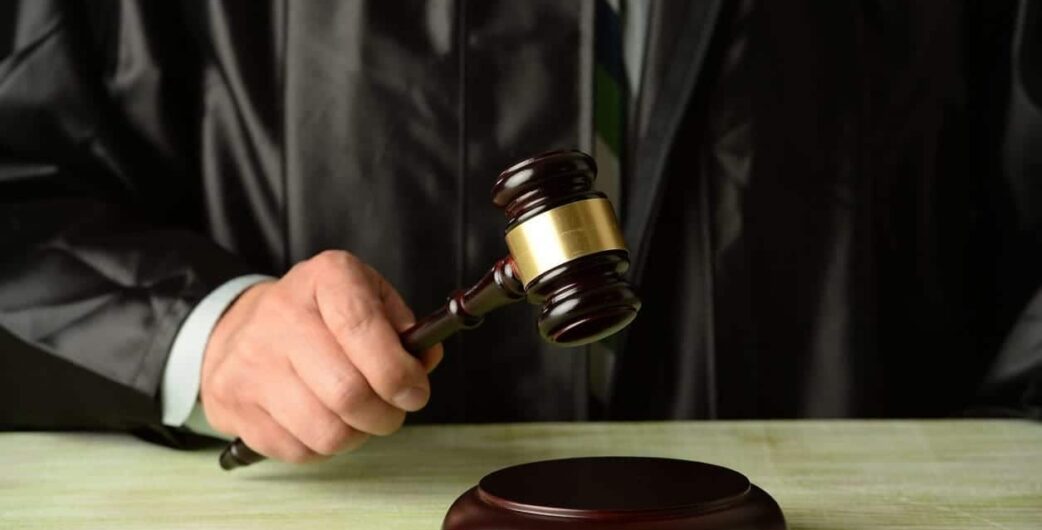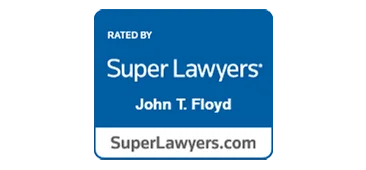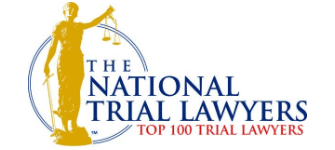Blog
Extraneous Offense Evidence During Punishment

What exactly is “extraneous offense evidence”?
Texas courts generally recognize that extraneous offense evidence is any act of prior misconduct not shown in the charging indictment or information. This misconduct does not have to have resulted in a conviction. There is no significant difference between an extraneous bad act and an extraneous offense. Both constitute extraneous offense evidence. The courts, however, have held that the terms “extraneous offense” and “prior misconduct” are not interchangeable; that an extraneous offense is a crime under the penal code while prior misconduct generally refers to conduct that is commonly considered to be morally or unethically reprehensible. It must be noted that extraneous offense evidence does not include a bad thought or a contemplated bad act.
Tipping the Scale in Texas
There are six Texas statutes that govern the purpose and admission of extraneous offense evidence in criminal trials in this state:
- Rules 404(b) and 403 of the Texas Rules of Evidence govern the scope of the use of extraneous offense evidence during the guilt/innocence phase of the trial.
- Articles 37.07 and 37.071 of the Texas Code of Criminal Procedure govern the use/admissibility of extraneous offense evidence during the punishment phase of the trial.
- Articles 38.36 and 38.37 of the Texas Code of Criminal Procedure deal specifically with the use/admissibility of uncharged extraneous offense evidence in murder and child abuse cases.
Texas 38.37 Extraneous Sex Crimes Against Children
In 2013, the Legislature amended Article 38.37 to allow the State to introduce evidence of a defendant’s prior sexual crimes against children other than the victim stated in the indictment. The previous version of the statute permitted only extraneous offense evidence involving the victim named in the indictment.
The above amendment notwithstanding, Texas jurisprudence generally acknowledges that extraneous offense evidence is inherently prejudicial and courts should consider its exclusion during the guilt/innocence phase because of the prejudice and confusion it causes. Underlying these two rules is the additional judicial belief that this sort of evidence could create an unfair surprise to the defendant standing trial.
Extraneous Evidence at Punishment
These evidentiary rules do not apply in the punishment phase of a criminal trial. Article 37.07, § 3(a)(1) allows for an open season on a defendant’s criminal history and prior misconduct. The prosecution may offer, and the trial judge has virtual unlimited discretion to admit, evidence of past crimes and/or bad acts. This section provides:
“Regardless of the plea and whether the punishment be assessed by the judge or the jury, evidence may be offered by the state and the defendant as to any matter the court deems relevant to sentencing, including but not limited to the prior criminal record of the defendant, his general reputation, his character, an opinion regarding his character, the circumstances of the offense for which he is being tried and, notwithstanding Rules 404 and 405, Texas Rules of Evidence, any other evidence of an extraneous crime or bad act that is shown beyond a reasonable doubt by evidence to have been committed by the defendant or for which he could be held criminally responsible, regardless of whether he has previously been charged or finally convicted of the crime or act…”
More than fifteen years ago, the Texas Court of Criminal Appeals (“CCA”) in Hayden v. State, discussed the kind of evidence that can be admitted during an Art. 37.07 hearing:
“In a non-capital felony trial, evidence is admissible during the punishment phase if ‘the court deems [it] relevant to sentencing. The Legislature did not define the term ‘relevant’ in the Code of Criminal Procedure, and beyond the few items enumerated in Article 37.07, it has not given any guidance as to what evidence is relevant to punishment. Borrowing from the definition of ‘relevant’ in Texas Rule of Evidence 401 is of little avail because the factfinder’s role during the guilt phase is different from its role during the punishment phase. Unlike the guilt phase, where the factfinder must decide discrete factual issues, deciding what punishment to impose is a ‘normative process, not intrinsically fact bound. Thus, what is ‘relevant’ to assessing punishment is ‘a function of policy rather than relevancy.’ Evidence is relevant if it helps the factfinder decide what sentence is appropriate for a particular defendant given the facts of the case.”
Texas courts consider an individual’s history of violating the law a relevant factor for a jury or judge to consider when assessing punishment because it relates to the defendant’s character—an evidentiary principle not permissible in the guilt/innocence phase.
403 Objection/Balancing Test at Sentencing
However, before admitting extraneous offense evidence during the punishment phase, the court must conduct the same “balancing test” analysis under Rule 403 as it would during the guilt/innocence phase. This is a two-prong test: 1) is the extraneous offense evidence relevant to a material issue in the case; and 2) if so, is the probative value of the evidence outweighed by unfair prejudice. The first prong is invariably answered in the affirmative. The second prong is not as clear: extraneous offense evidence deemed prejudicial in the guilt/innocence phase may be readily admissible in the punishment phase.
In 2006, the CCA in Gigliobianco v. State held that the “balancing test” analysis should include the following factors:
- How compellingly the extraneous offense evidence serves to make a fact of consequence more or less probable a factor which is related to the strength of the evidence by the proponent to show the defendant in fact committed the extraneous offense;
- The potential the other offense evidence has to impress the jury “in some irrational but nevertheless indelible way;”
- The time the proponent will need to develop the evidence, during which the jury will be distracted from the consideration of the indicted offense; and
- The force of the proponent’s need for this evidence to provide this evidence to prove a fact of consequence, i.e., does the proponent have other probative evidence available to him to help establish this fact, and is this fact related to an issue in dispute.
Notice Requirement Under 37.07
Notice is also an evidentiary requisite under specific conditions. Art. 37.07 § 3(g) requires that notice be given to the defendant by the State before extraneous offenses evidence can be introduced during the punishment phase, but only if the defendant timely request that notice. This subsection specifically provides:
“On timely request of the defendant, notice of intent to introduce evidence under this article shall be given in the same manner required by Rule 404(b), Texas Rules of Evidence, if the attorney representing the state intends to introduce an extraneous crime or bad act that has not resulted in a final conviction in a court of record or a probated or suspended sentence, notice of that intent is reasonable only if the notice includes that date on which and the county in which the alleged crime or bad act occurred and the name of the alleged victim of the crime or bad act. The requirement under this subsection that an attorney representing the state give notice only if the defendant makes a timely request to the attorney representing the state for the notice.”
The First District Court of Appeals, in Apolinar v. State, held that this purpose of notice is to prevent “unfair surprise and to enable the defendant to prepare to answer the extraneous offense evidence.”
Notice Requires Date and County
The Third District Court of Appeals, sitting in Austin, in Roethel v. State, explained both the purpose and limitations of notice:
“The legislature’s enactment of article 37.07, section (3)(g), limits the trial court’s discretion to admit evidence of extraneous offenses at the punishment phase. Unlike Rule 404(b), article 37.07, section 3(g) specifies that notice is reasonable only if the notice includes the date on which and the county in which the alleged crime or bad act occurred. Despite the plain language of the statute, courts have carved out exceptions to the rule so that the notice need not specify exact counties … Courts also have given the State leeway in specificity regarding dates, perhaps because children (and adults victimized as children) may not always be able to recall specific dates of offenses…”
Thus, the rule is that the State need only “substantially comply” with the subsection 3(g) notice requirement—and even if the State fails to completely comply with this notice requirement, the error does not automatically result in a reversal of the punishment imposed; it simply means that the appeals court will conduct a “harmless error analysis” under Rule 44.2(a) of the Texas Rules of Appellate Procedure.
Rule 44.2 permits the reversal of a judgment only if it is determined beyond a reasonable doubt that the error complained of contributed to a defendant’s conviction or punishment. The Roethel court went a step further by finding that insufficient notice, or even a lack thereof, under Subsection 3(g) is a non-constitutional error that does not have the kind of substantial or injurious effect or influence on the jury’s verdict to warrant vacating a judgment.
Inquiry Should Include Prosecutorial Bad Faith
Roethel, however, also instructed that the “harmless error analysis” should include an examination of the record to determine whether the insufficient, or lack of, notice “resulted from prosecutorial bad faith” or “prevented the defendant from preparing for trial”—the latter requiring an inquiry into whether the defendant was “surprised” by the extraneous offense evidence and/or whether the lack of notice passes legal mustard under Art. 37.07.
The cases are extremely limited in finding that notice did not comply with the § 3(g) requirement. Below are two such cases:
- Wheeler v. State, held that notice which failed to specify county or state in which the alleged offense occurred and failed to name the victim was inadequate under § 3(g); and
- James v. State, held that State’s notice was defective under § 3(g) for failure to state any date, where evidence showed a pattern of abuse over a period of decades
Bad Acts of Juveniles
It should also be noted that while the language of Art. 37.07 seems to suggest that only juvenile adjudications involving a felony or a misdemeanor carrying jail time are admissible, the courts have placed a much broader definition on the statute’s language, finding that unadjudicated crimes or bad acts committed by a juvenile are admissible at the punishment phase of an adult criminal trial.
As a final caveat, it should be pointed out that legal experts in this field instruct defense attorneys to be aware that if they open the door to positive character or reputation of the defendant, the State can then question the defendant about “instances of misconduct that tend to mitigate against the positive image” the attorney is trying to create.
This caveat notwithstanding, an attorney representing a client with a fairly “clean background” should seriously consider using § 3(g) as a way to put the defendant’s best foot forward.
Take the first step toward protecting your freedom by contacting us now
Testimonials
John T. Floyd is Board Certified in Criminal Law By the Texas Board of Legal Specialization
Request A Confidential Consultation
Fields marked with an * are required
"*" indicates required fields



















